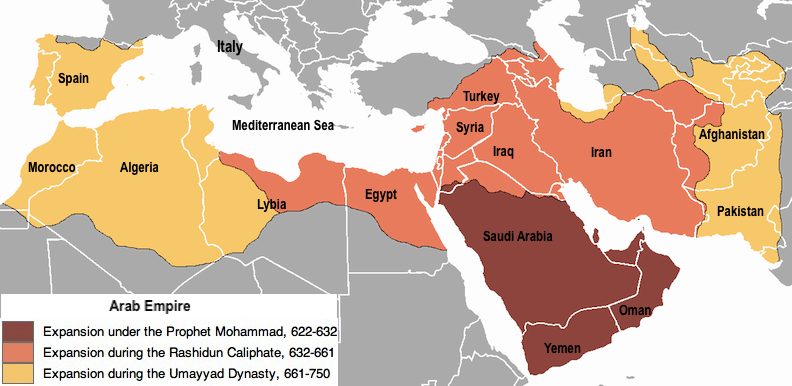The 1st century of the Hijri calendar, spanning from 622 to 719 CE, marks the most pivotal period in Islamic history.
This century witnessed the birth and rapid expansion of Islam, laying the foundation for what would become the global ummah.
Umar (RA) introduced the Hijri calendar as Caliph in 639 CE, establishing Muharram as the first month of the new calendar.
The Hijra: A New Beginning (622 CE)
The Hijra, or migration, of Prophet Muhammad (PBUH) and his followers from Mecca to Medina in 622 CE, marks the beginning of the Islamic calendar.
This event was not just a physical migration but also a monumental shift in the history of Islam.
The Prophet (PBUH) established the first Islamic state in Medina, uniting the diverse tribes under the banner of Islam.
The Hijra symbolizes the transition from persecution in Mecca to the establishment of a community based on faith, justice, and brotherhood.
The Early Battles: Defending the Faith
The early years in Medina were marked by a series of significant battles that defined the Muslim community’s survival and growth:
- Battle of Badr (624 CE): A miraculous victory for the Muslims against a larger Quraysh force, seen as a divine endorsement of the new faith.
- Battle of Uhud (625 CE): A challenging battle where the Muslims faced setbacks, teaching them the importance of unity and discipline.
- Battle of the Trench (627 CE): A defensive strategy by the Muslims that successfully thwarted a large coalition of Meccan forces.
These battles were crucial in defending the nascent Muslim community and establishing Islam’s presence in the Arabian Peninsula.
The Conquest of Mecca (630 CE)
The Conquest of Mecca in 630 CE was a turning point in Islamic history.
After years of conflict, Prophet Muhammad (PBUH) led a peaceful and largely bloodless conquest of Mecca.
Upon entering the city, he famously declared a general pardon of the inhabitants of Mecca, highlighting the Islamic principles of mercy and forgiveness.
The idols in the Kaaba were destroyed, reestablishing the city as the spiritual center of Islam.
The Rashidun Caliphate: The First Caliphs (632-661 CE)
Following the Prophet’s (PBUH) passing in 632 CE, the leadership of the Muslim community was taken up by the Rashidun Caliphs, the “Rightly Guided” leaders:
- Abu Bakr (RA) 632-634 CE: The first Caliph, who successfully united the Arabian Peninsula and dealt with the Ridda Wars, solidifying the Muslim state.
- Umar ibn al-Khattab (RA) 634-644 CE: Expanded the Islamic empire to include parts of the Persian and Byzantine empires, establishing a vast, well-administered state.
- Uthman ibn Affan (RA)644-656 CE: Oversaw the compilation of the Quran into a single, unified text, ensuring its preservation.
- Ali ibn Abi Talib (RA) 656-661 CE: Faced internal strife and the first civil war (Fitna), marking the beginning of political divisions in the Muslim community.
The Umayyad Caliphate (661-750 CE)
The Umayyad Caliphate, established by Muawiya ibn Abi Sufyan (RA) after the end of the Rashidun period, marked a new phase in Islamic history.
The Umayyads expanded the empire further, reaching Spain in the west and India in the east.
They also established Arabic as the official language of the empire and introduced administrative and financial reforms.
However, their rule was also marked by internal dissent, leading to the rise of the Abbasid dynasty in the following century.
Conclusion
The 1st century Hijri was a period of immense significance in Islamic history.
It saw the establishment of the first Muslim state, the rapid expansion of Islam, and the foundation of a global civilization.
The lessons from this century, such as the importance of unity, the principles of justice, and the commitment to spreading the message of Islam, continue to inspire Muslims around the world today.
This century set the stage for the remarkable journey of the Muslim Ummah, a journey that would shape the course of world history for centuries to come.
What do you think was the most pivotal moment of the 1st century CE?
Comment Below?
